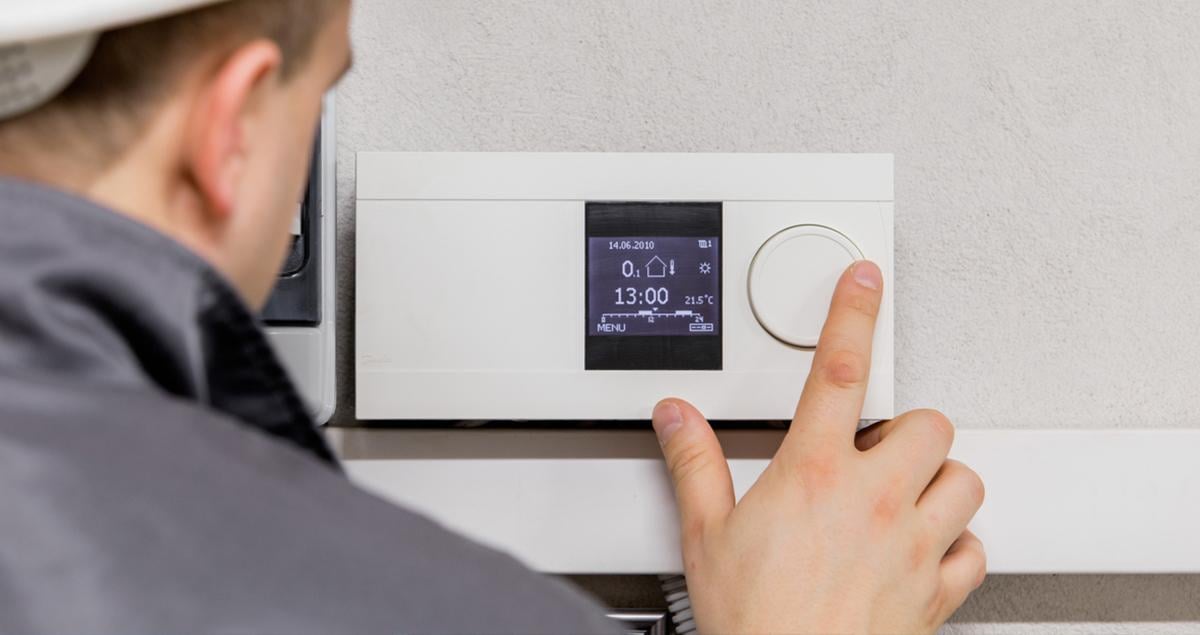7 ways of decarbonizing the way we use heat

The largest single form of energy demand on the planet is our use of heat.
In fact, heating water, our homes, and heat for industrial processes account for more than half of all energy demand, according to the IEA.
But just 10% of this heat comes from renewable sources, with the majority being produced using fossil fuels.
This creates a major challenge for governments around the world as they seek to decarbonize society and meet climate change targets tied to the Paris Agreement of limiting global warming to well below 2 degrees Celsius above pre-industrial levels.
Some countries have committed to deadlines for achieving net-zero CO2 emissions. In most cases this will require substantial changes in how heat is sourced and used.
Given the substantial levels of energy required for heating spaces and the high temperatures used in industrial processes, it is unlikely to be as simple as a wholesale switch to electric heat powered by renewables.
Here are seven ways heat can be decarbonized in both the residential and industrial sectors.
1. Electrification with storage
Renewable energy has helped dramatically reduce the carbon intensity of electricity across the globe.
Because of this, some say the key to cutting carbon emissions is to electrify everything.
And when it comes to residential heating, there is an argument that electrification can provide the greenest solution.
Speaking at the BloombergNEF Summit 2019 in London, Toby Ferenczi, director of Strategy at UK home energy retailer OVO Group, told the audience it was possible for households to affordably source heat from 100% renewable electricity.
“If you take out your gas boiler, put in an electric boiler and have 100% renewable electricity for your house, and combine that with, say, four hours of thermal storage, then our calculations show just by buying electricity at the cheapest times of day the running costs are really comparable to gas today,” he said.
However, Ferenczi acknowledged that the upfront cost of purchasing all this equipment is much higher. In addition, the operating costs could only be truly competitive with natural gas if owners of residential heaters were able to make money by selling their energy storage capacity as part of grid-balancing schemes.

2. Heat pumps
While the economics of electrifying heat may take a while to stack up, other forms of renewable heat are already making inroads into traditional fossil fuel-fired systems.
Heat pumps take natural warmth from the ground or air and use it for both space heating and hot water.
While heat pumps currently meet just 3% of global heat demand from buildings, they have seen rapid growth in recent years: the growth rate in global heat pump sales doubled between 2016 and 2018, with 80% of new household heat pump installations in China, Japan and the U.S..
Europe is the fastest-growing market for heat pump sales as many countries seek to decarbonize.
For example, the Netherlands has committed to phase out natural gas heating entirely by 2050. As a result of this policy, heat pump sales in the country have grown by more than 50% each year since its announcement in 2017.
3. Waste heat recovery
Waste heat recovery could deliver the equivalent of Europe’s total heat demand for buildings. This is according to participants in a Danish pilot project aimed at proving Copenhagen’s ability to be carbon neutral by 2025; they are pushing for the development of a smart thermal grid across Europe that would “harvest heat wasted from current and future sources such as power plants and data centers”.
The potential of waste heat recovery is being demonstrated by projects across the continent. For example, in the northern Italian city of Brescia, heat created by the steelmaking process in a local factory is captured and distributed to provide heat for 2,000 families in winter.
The key to realizing this potential will be linking up isolated projects as district heating systems in many cities across Europe.
District heating, pioneered by New York’s iconic system built in 1882, can be found in many cities around the world. These systems offer an opportunity for sustainable heating at scale: waste heat from industrial processes heats water that can be distributed through cities. Such systems deliver efficiencies in larger volumes that cannot be achieved by smaller-scale heating solutions in individual homes and businesses.
4. Green gas and biomass
For countries currently heavily reliant on natural gas delivered by a grid for heating needs, such as the U.K. and the Netherlands, biomethane offers a potential lower- carbon alternative.This so-called “green gas” can come from sustainable sources such as waste or specially grown crops. The biomethane can then be scrubbed to be CO2-free before it enters the mains gas system, and in turn burned by boilers in homes and businesses.Organic waste and biomass can also be used to create heat at source. Biomass boilers are capable of replacing domestic fossil fuel boilers, or at a larger scale they can be used as part of a Combined Heat and Power (CHP) plant.
5. Hybrid heating
With fossil fuels dominating heating use in so many countries, a more pragmatic approach to cut emissions may come in the form of hybrid heating. These systems are a mixture of different solutions and can include conventional gas heating, heat pumps, solar thermal and CHP plants.
For example, in the U.K. a trial scheme called the Freedom Project combines small air source heat pumps with gas boilers and smart controller technology to cut overall gas usage while maintaining the levels of home heating and hot water required by consumers.
“The advantage from the network operator perspective is that you're vastly reducing the gas demand because consumers are able to use the electric heat pump for the majority of the time, and just use the gas boiler for top-ups,” said Matthew Hindle, Head of Gas at the Energy Networks Association, also speaking at the BloombergNEF Summit.
Another hybrid solution for residential heating highlighted at the summit was micro-CHP plants: these capture energy that is usually wasted by gas boilers and use fuel-cell technology to convert it into electricity.
6. Hydrogen
One of the biggest challenges for decarbonizing heat is to find a solution that can fit easily into existing infrastructure.
For some people in the industry, hydrogen holds the key.
Hindle told the BloombergNEF Summit that using the U.K.’s gas infrastructure to transport hydrogen was likely to be technically feasible in the near future thanks to ongoing upgrades.
“By 2032, the U.K. gas distribution network will be predominantly polyethylene pipe that is capable of transporting hydrogen,” he said.
“We won’t need a parallel system at the distribution level. The technical work that's going on now is looking at what else we need to do to manage that conversion and what options we have for the higher-pressure parts of the system.”
Trials blending hydrogen into existing gas infrastructure are taking place across Europe. For example, at Keele University in England, campus buildings and student accommodation are taking part in its Hydeploy project for hydrogen-blended heating.
As outlined in MHI Group’s eBook, hydrogen also offers the opportunity to decarbonize heat in industrial applications, where the high temperatures required are beyond what can be achieved through more conventional solutions like heat pumps. For example, steel manufacturing needs to achieve temperatures of more than 2000°C to produce iron from iron ore. These extreme levels of heat are typically achieved using coking coal, making the steel industry a major emitter of CO2. Primetals Technologies is developing a method to use hydrogen to replace coking coal in the creation of iron.
7. CCUS
While hydrogen is one option for decarbonizing industrial heat applications, another is to use carbon capture, utilization and storage (CCUS).
Capturing the CO2 emitted in the manufacture of products such as steel and cement can help decarbonize their high-temperature processes.
Cement production, for example, requires temperatures as high as 1450° and along with steel and chemicals is one of the three major industrial emitters of CO2.
Demonstration and pilot projects for cement CCUS are underway around the world, with China leading the way: the world’s largest CCUS pilot project for a cement plant is now operating in Anhui province. It can capture 50,000 metric tons of CO2 annually – the equivalent of taking more than 10,000 cars off the road each year. There are similar demonstration projects are various stages of development in countries including Belgium and Canada.
Whether it is by capturing emissions from heat applications, or switching to low or zero carbon sources of heat, one thing is certain: achieving net-zero CO2 emissions will only be made possible through decarbonizing the planet’s undeniable need for heat.
The heavy industries sector, with its requirement for vast amounts of industrial heat, account for carbon emissions that prove hard-to-abate. See what innovative thinking and technologies are helping.





